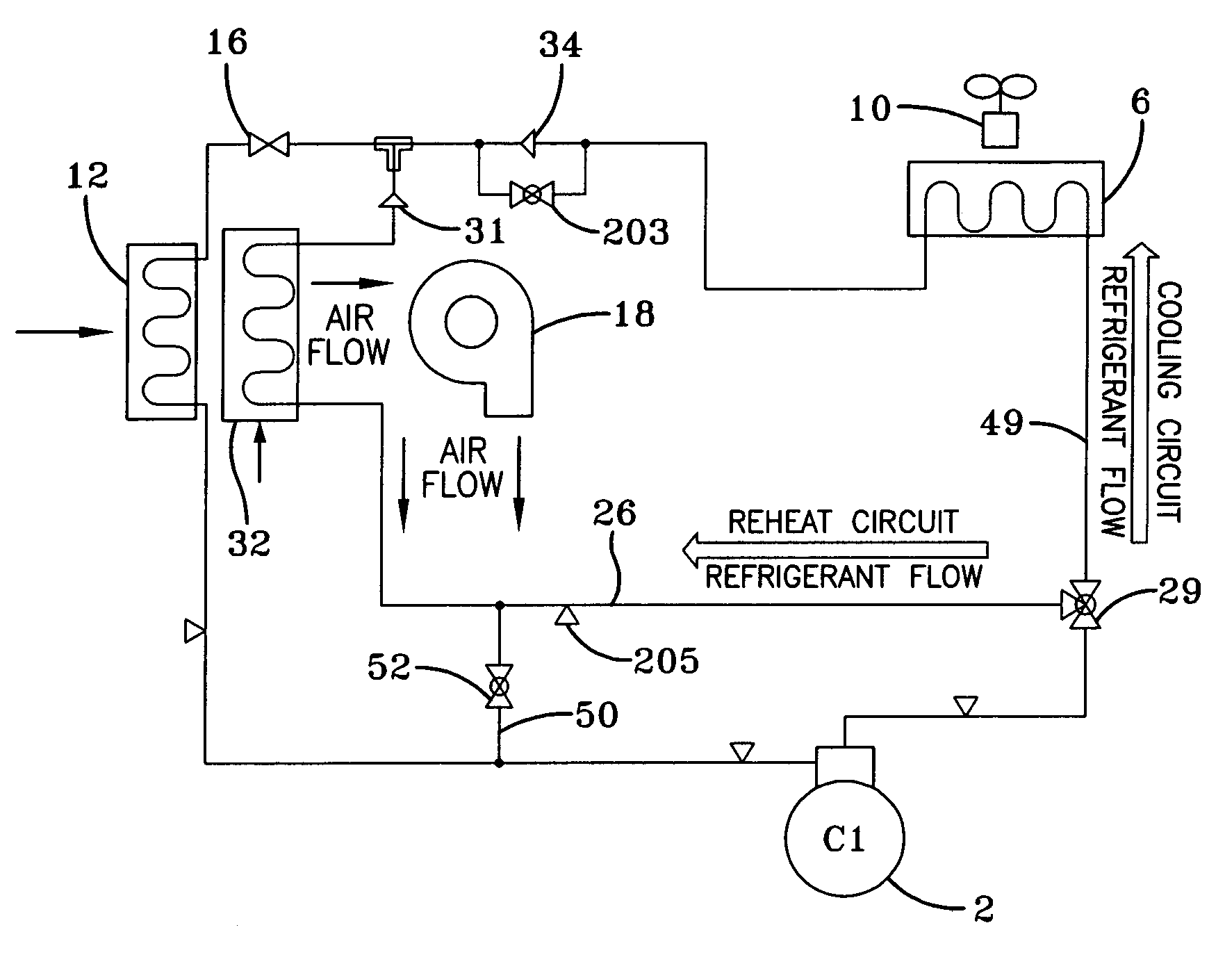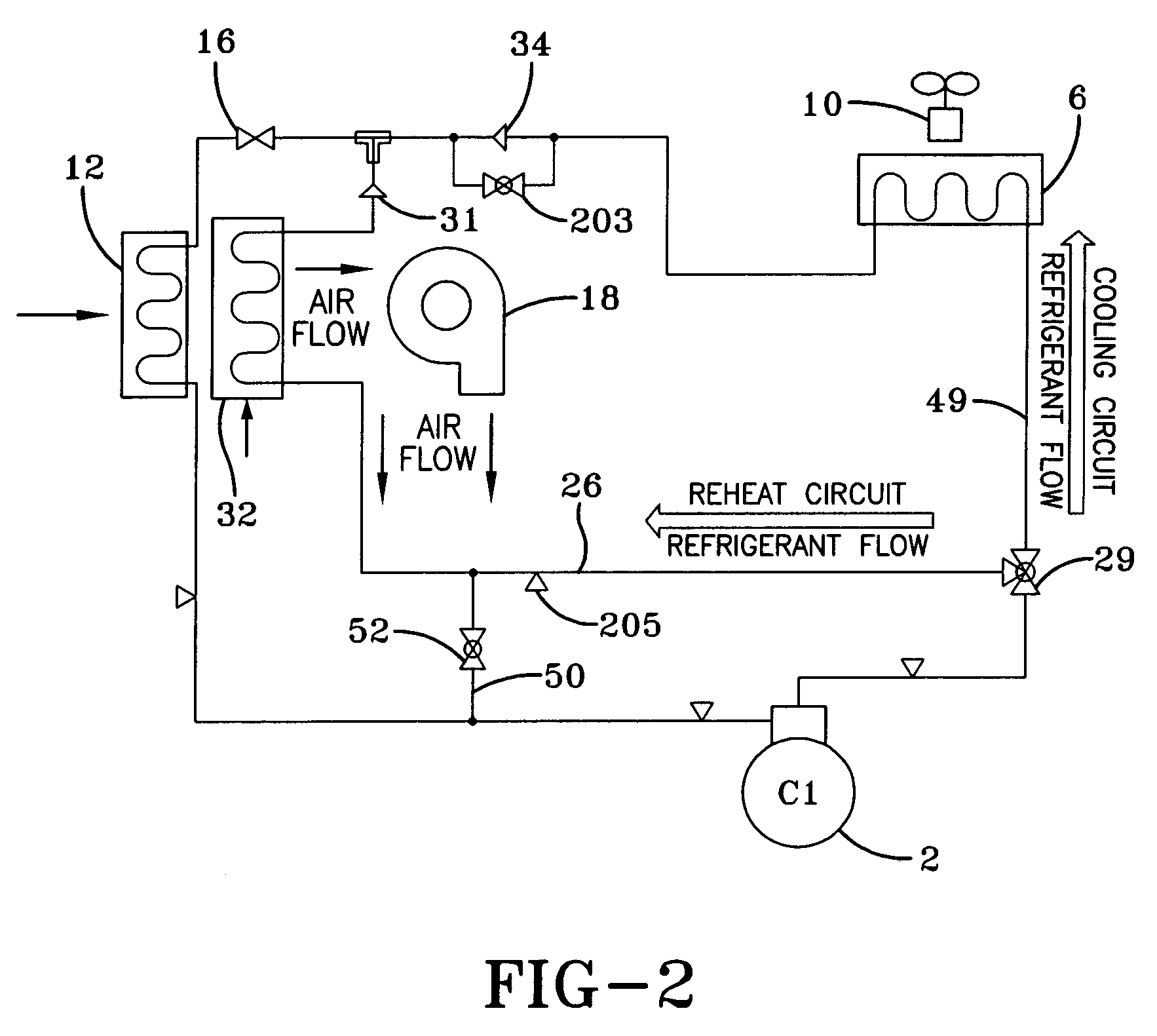Control stability system for moist air dehumidification units and method of operation
a technology of stability system and moist air, which is applied in the direction of defrosting, heating types, domestic cooling apparatus, etc., can solve the problems of reducing the quantity of refrigeration available in the remainder of the refrigerant system to achieve dehumidification, affecting the efficiency of dehumidification, etc., to achieve efficient dehumidification, maximum capacity and efficiency, and accumulation
- Summary
- Abstract
- Description
- Claims
- Application Information
AI Technical Summary
Benefits of technology
Problems solved by technology
Method used
Image
Examples
Embodiment Construction
[0022]FIG. 1 illustrates a prior art single compressor circuit. This system is set forth in United Stated Patent Application No. U.S. 2004 / 0089015 A1, based on U.S. Ser. No. 10 / 694,316 to Knight et al., filed Oct. 27, 2003, now allowed, (“the Knight application”) and assigned to the assignee of the present invention, which allowed application is incorporated herein by reference. This system includes a reheat circuit and a cooling circuit which operate independently. In operation, the prior art system of FIG. 1 includes the usual components of a cooling system circuit, a compressor 2, connected by conduit to a condenser 6 which is connected by conduit to an evaporator 12, which is connected by conduit to compressor 2. In the cooling mode, refrigerant sealed in system 1 is compressed into a hot, high-pressure gas in compressor 2 and flows through conduit to condenser 6. The condenser having a heat exchanger or coil 6, includes a fan 10 which blows air across the condenser coil 6. In t...
PUM
 Login to View More
Login to View More Abstract
Description
Claims
Application Information
 Login to View More
Login to View More - R&D
- Intellectual Property
- Life Sciences
- Materials
- Tech Scout
- Unparalleled Data Quality
- Higher Quality Content
- 60% Fewer Hallucinations
Browse by: Latest US Patents, China's latest patents, Technical Efficacy Thesaurus, Application Domain, Technology Topic, Popular Technical Reports.
© 2025 PatSnap. All rights reserved.Legal|Privacy policy|Modern Slavery Act Transparency Statement|Sitemap|About US| Contact US: help@patsnap.com



